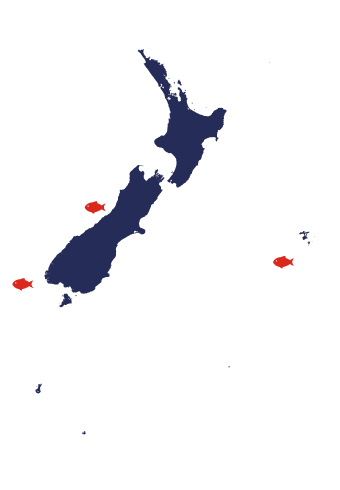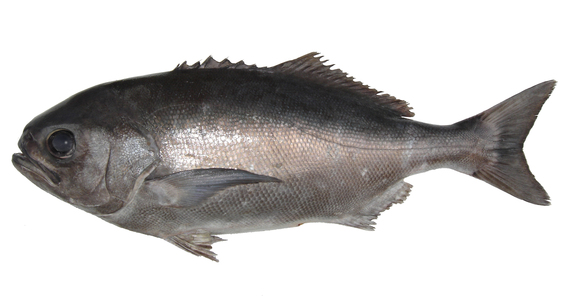Bluenose
Hyperoglyphe antarctica
A moist and succulent white fish with a firm texture.
Bluenose have been landed from New Zealand waters since the 1930's.
They are found in the temperate waters of the Southern Hemisphere around offshore reefs or areas where the sea floor slopes steeply.
Alongside commercial fishing, Bluenose are also targeted by recreational fishers around deep offshore reefs using line fishing methods
Key Information
Family
Bluenose belong to the Centrolophidae family (raftfish and Medusafish)
Physical attributes
Distinguished by its blunt snout and low set large eyes. Bluenose are a dark metallic blue-black to grey on the back of the body, shading to silver on the sides and belly.
The flesh is firm, medium coloured and moist.
Sustainability
Bluenose is managed by the Ministry for Primary Industries using the New Zealand Quota Management System (QMS). Regular stocks assessment are conducted to estimate fishery stock size and numbers. Scientific studies are also used. From these, scientists can estimate future stock sizes and catch limits.
Catch performance against the TACC has varied for Bluenose, with the combined TACC being under-caught by an average 9% to 20% from 1987 to 2008.
Geographical location
Bluenose are found in the temperate waters of the Southern Hemisphere. They like rough ground on the outer shelf and upper slope especially from 100-500 metres.
Market Names
- New Zealand: Bluenose, Stone Eye, Bonita, Bream, Griffin's Silver Fish
- Australia: Blue Eye Trevella
- Commonwealth of Independent States: Giperoglif
- Japan: Minami media
Locations Caught

Profile
Average weight
10 kg
Average length
60-100 cm
TACC i
630 tonne
Talley's catch
<100 tonne

Nutritional information
Average quantity per 100g
Energy
382 kJ
Protein
19.0 g
Fat, total
1.6 g
Carbohydrate
0.3 g
Seasonal availability
Flavour and cooking
Bluenose has a firm, succulent flesh with thick, moist flakes. It is suitable for most cooking methods including baked, barbecued, marinated, fried and poached. It is also a great option to use in soups or chowders.
Want to know more?
If you have any enquiries please feel free to contact our friendly sales team.
© Talley's 2025 • Web design and development by Plato
